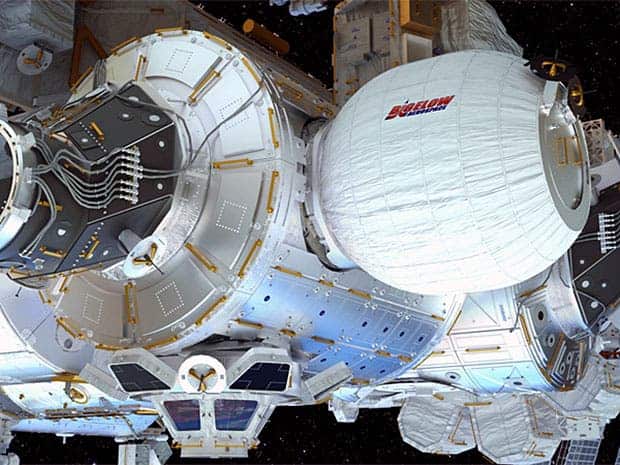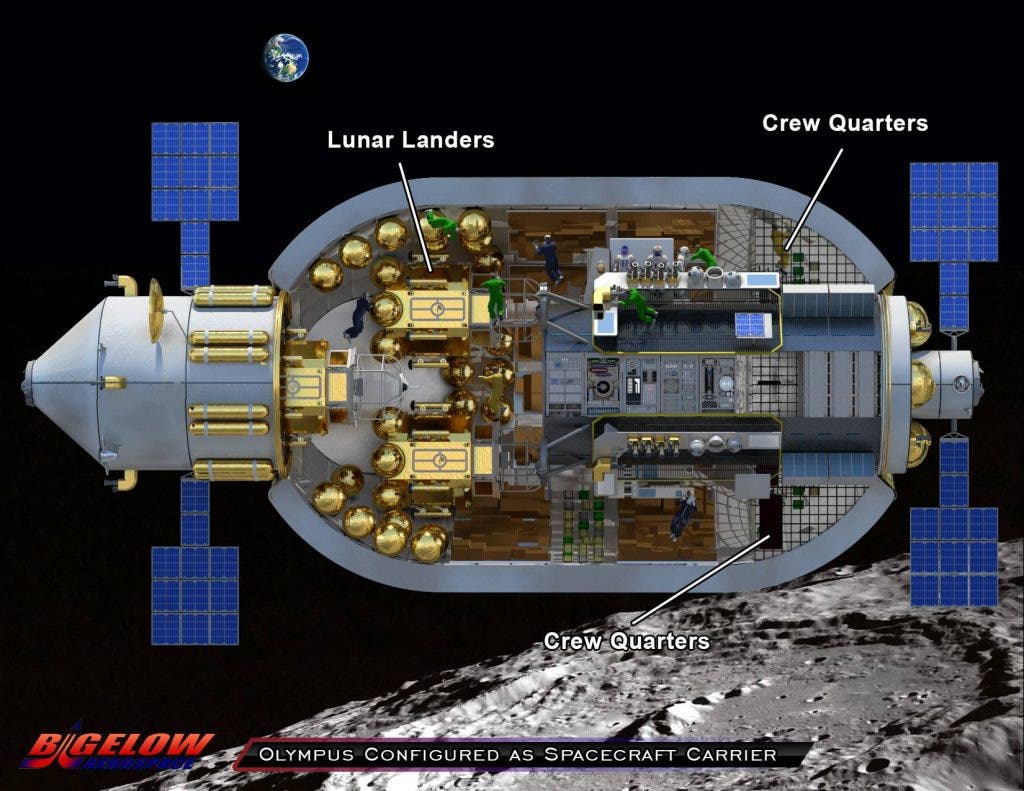The Bigelow Expandable Activity Module, or BEAM, was successfully docked to the International Space Station at 5:36 am EDT on Sunday. BEAM is basically a huge inflatable structure which is easy to carry and provides ample living space for astronauts once it expands. Props to SpaceX for yet another successful Dragon mission, but also to Bigelow Aerospace — a company which might become a household name in the coming decade if their plan works: building the first space hotel!

BEAM launched occupying only a fifth of the volume it currently has now that it’s been docked to the ISS, or about the size of a bedroom. The module is structurally designed to last five years and serves as a habitat for astronauts. No human will float through BEAM though until the module has been vigorously tested. In the meantime, automated instruments inside BEAM will perform some science experiments.
Previously, Bigelow two inflatable modules in space, Genesis I and Genesis II, respectively. Genesis II had a designed life period of six months but is still functional to this day. So, in all likelihood, BEAM will pass NASA’s barrage of tests.
Inflatable habitats are cheap, safe and provide ample living quarters. In the works is Bigelow’s B330 module which will provide 330 cubic meters of interior space. Right now, the ISS astronauts are crammed up in only 425 cubic meters — the station’s entire habitat volume.
Then there’s the outrageous BA 2100 “Olympus,” which supposedly inflates to 2100 cubic meters of usable interior volume. That’s twice as spacious as the ISS.

“It’s a pathfinder for building manned space habitats,” said Lisa Kauke, BEAM deputy program manager at Bigelow Aerospace, a few weeks ago during launch preparations.
“By attaching BEAM to the ISS, we’ll be able to evaluate our technology, elevate its technology readiness level and demonstrate that we are ready to support humans in space,” Kauke added.
Bigelow, based in North Las Vegas, was founded in 1999 by Robert Bigelow who made a fortune in the hotel and real estate business. The business aims to serve NASA by providing living quarters, but the long-term goal is for Bigelow to dominate real estate outside Earth. This implies either launching a space hotel in Earth’s orbit or settling a permanent lunar outpost.
In 2001, American businessman Dennis Tito became the first ever space tourist having paid his own way to the International Space Station aboard a Russian Soyuz spacecraft. He reportedly paid $20 million. Fifteen years later we’re closing in on the age of market stimulated space ventures. SpaceX is getting mighty close to launching payloads 100 times cheaper than a Soyuz launch and Bigelow now proves that it is possible if there’s a will to make a private space station.
Soon, space tourism will become more accessible. It would still cost a couple million, maybe, but as others jump the bandwagon the economics of scale will push the ticket price well under a million. Maybe adding “chill in a space hotel” to your bucket list is worth contemplating.


